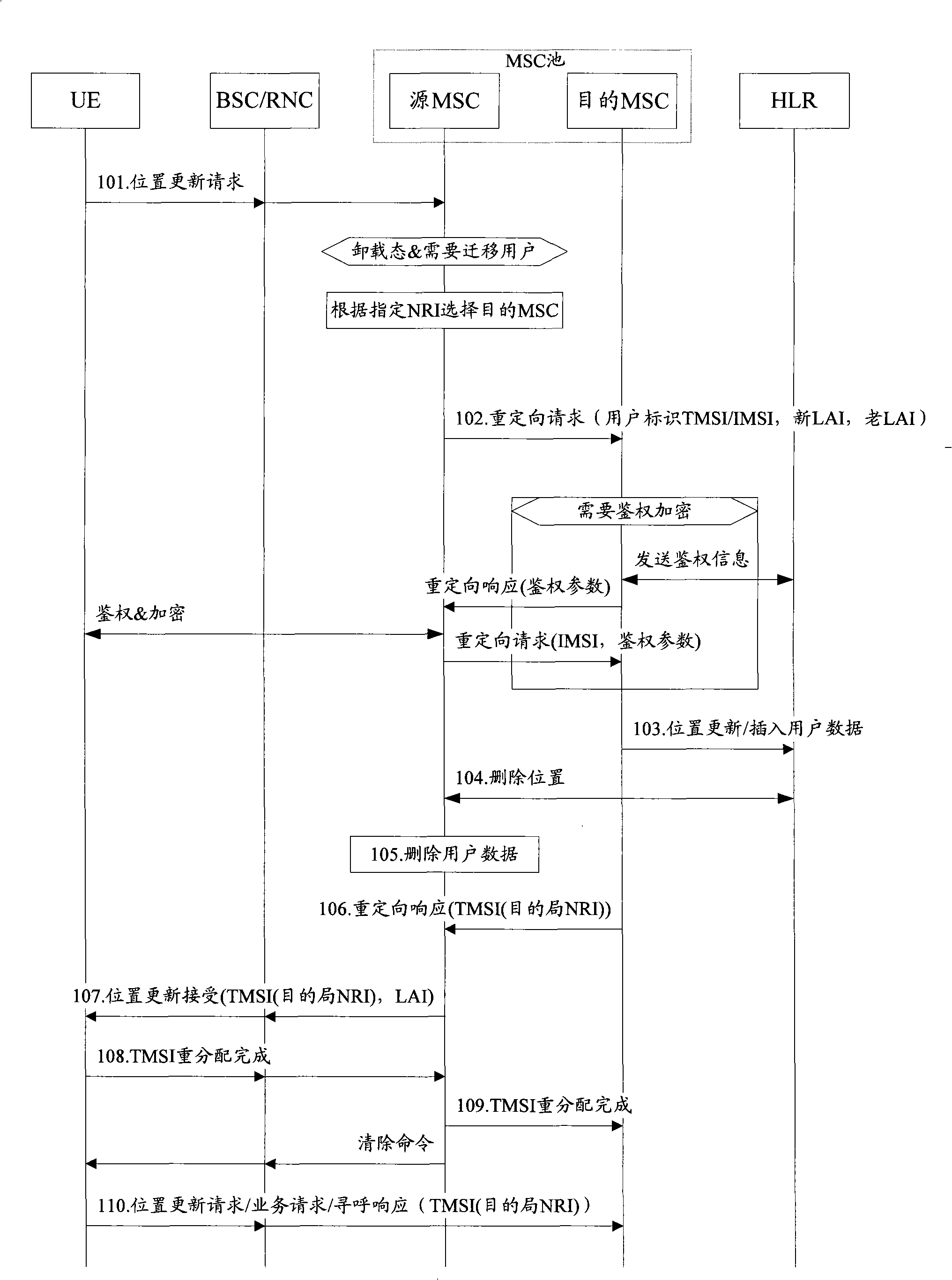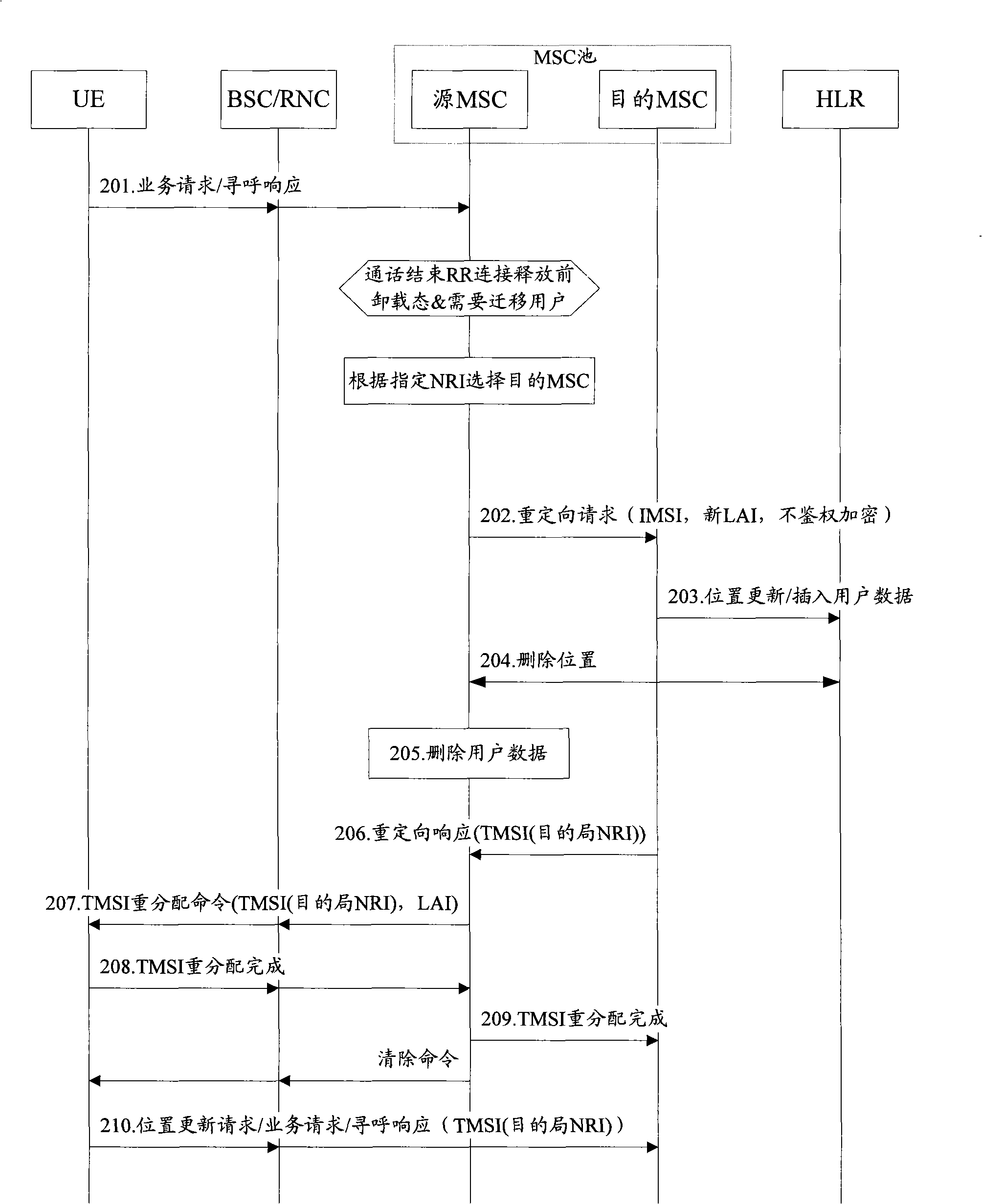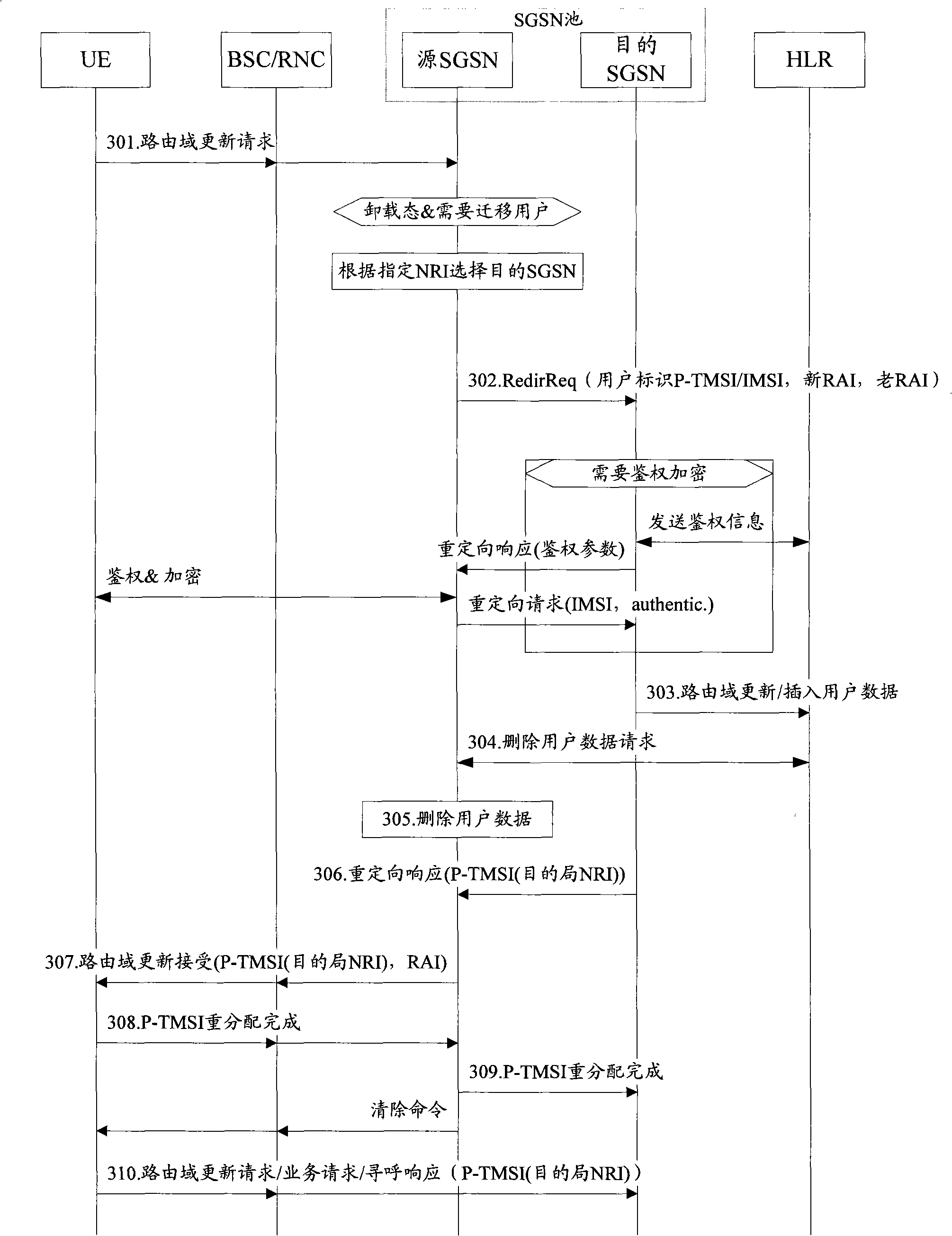Method, system and core network node for implementing load migration in pool zone
A load migration and node technology, applied in network data management, electrical components, radio/induction link selection and arrangement, etc., can solve problems such as user service failure, service quality degradation, inability to actively initiate location updates, etc.
- Summary
- Abstract
- Description
- Claims
- Application Information
AI Technical Summary
Problems solved by technology
Method used
Image
Examples
Embodiment 1
[0036] see figure 1 As shown, the load migration process in this embodiment mainly includes the following steps:
[0037] Step 101: the UE initiates a location update request to the source MSC through the BSC / RNC.
[0038] Step 102: After the source MSC receives the location update request initiated by the UE, it first judges whether the UE meets the relocation conditions, such as judging whether the UE belongs to the user to be relocated according to the IMSI number segment of the UE and whether the UE is located in the RAN where Iu / A-Flex is enabled, If yes, query the "NRI Number" table according to the destination NRI indicated by the O&M to determine the destination MSC, and send a redirection request (Redir Req) message to the destination MSC.
[0039] If the table lookup is unsuccessful, the source MSC will directly update the location in the local office without migrating the user.
[0040] Wherein, the redirection request message generally carries user information su...
Embodiment 2
[0059] see figure 2 As shown, the load migration process in this embodiment mainly includes the following steps:
[0060] Step 201: UE initiates a service request or paging response to the source MSC.
[0061] Step 202: If the UE meets the relocation conditions and is located in the Iu / A-Flex-enabled RAN, the source MSC will query the "NRI Number" table according to the NRI indicated by the O&M to determine the destination MSC before the call ends and the RR connection is released. The destination MSC sends a redirection request message.
[0062] If the table lookup is unsuccessful, the source MSC sends a CLR_CMD to the BSC / RNC where the UE is located to release the RR connection, does not migrate the user, and ends the current processing.
[0063] Wherein, the user information carried in the redirection request message includes: IMSI and new LAI. Optionally, authentication encryption information may also be carried in the message. In the case of non-location update, the ...
Embodiment 3
[0072] see image 3 As shown, the load migration process in this embodiment mainly includes the following steps:
[0073] Step 301: UE initiates a routing domain update request to the source SGSN.
[0074] Step 302: If the UE meets the relocation conditions and is located in the Iu / A-Flex-enabled RAN, the source SGSN queries the "NRI Number" table according to the NRI indicated by the O&M to determine the destination SGSN, and sends a redirection request message to the destination SGSN.
[0075] If the table lookup is unsuccessful, the source SGSN directly completes the routing domain update at the local office, and ends the processing of this flow.
[0076] The difference from Embodiment 1 and Embodiment 2 is that at this time, the redirection request message carries IMSI, packet domain temporary mobile subscriber identity (P-TMSI), new routing domain identity (RAI), old RAI, authentication encryption information, user status and other user information.
[0077] Step 303: Af...
PUM
 Login to View More
Login to View More Abstract
Description
Claims
Application Information
 Login to View More
Login to View More - R&D Engineer
- R&D Manager
- IP Professional
- Industry Leading Data Capabilities
- Powerful AI technology
- Patent DNA Extraction
Browse by: Latest US Patents, China's latest patents, Technical Efficacy Thesaurus, Application Domain, Technology Topic, Popular Technical Reports.
© 2024 PatSnap. All rights reserved.Legal|Privacy policy|Modern Slavery Act Transparency Statement|Sitemap|About US| Contact US: help@patsnap.com










